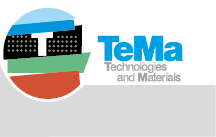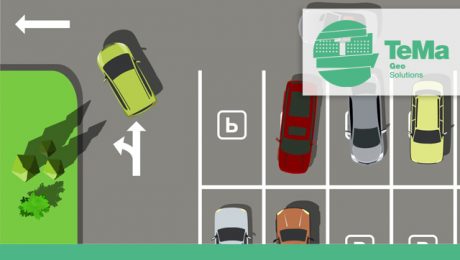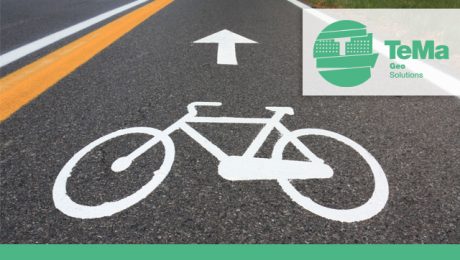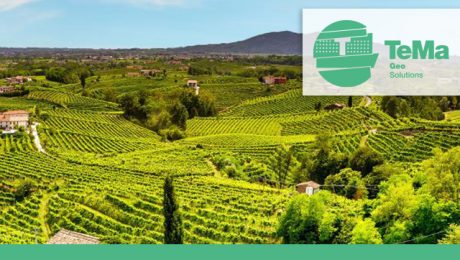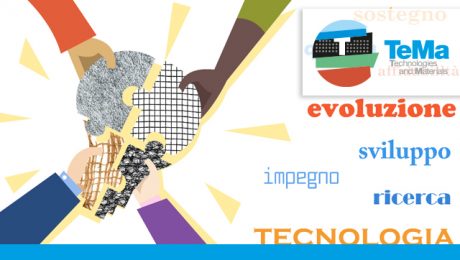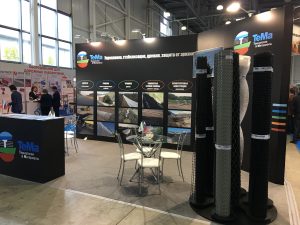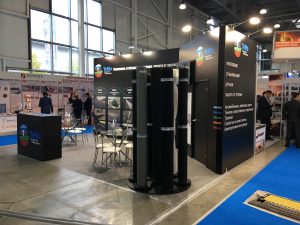Environmental intervention works in keeping with our philosophy
An environmental reappraisal
Over the centuries the relationship between man and the environment has undergone considerable tensions. Rural development and the impetus in building have undoubtedly disrupted certain landscapes, reducing natural spaces to accommodate new urban and agricultural areas. This type of intervention work has led to a crisis in the ecosystem, imposing re-evaluation of the fragile balance between the economy and the environment.
This is the socio-cultural background that has led to global re-assessment aimed at defining programmes and new territorial management formulas. It has been the driving force behind TeMa Geo Solutions, the TeMa business unit dedicated to environmental intervention works. These are aimed at protecting land and offering the opportunity to operate using eco-compatible solutions and products that integrate into the environment without compromising its appearance or safety.
Sustainable development according to TeMa
Nestled at the foot of the hills declared a UNESCO World Heritage Site, the TeMa headquarters could not help but consistently correspond to this desire for sustainability, widespread in this area for some years now. But how has it contributed? By using raw materials responsibly, with 100% natural solutions and intervention procedures with low environmental impact.
Natural products
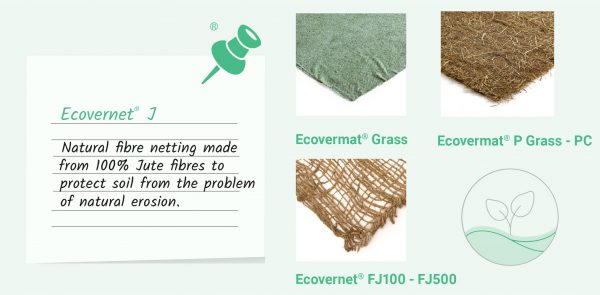
As a concrete example, TeMa addresses the problem of surface erosion of the soil by meteoric rain with Ecovernet® in natural fibres such as jute or Ecovermat® in natural fibres such as straw and coconut – or in biodegradable cellulose fibre. Installing products in this range allows intervention works to be carried out immediately, even in situations with difficult access for on-site vehicles. For such types of intervention works, total integration with the soil is achieved, guaranteeing lasting results over time.
Green intervention works

An interesting new development introduced by our technicians is the use of lightweight materials that feature reduced encumbrance, which not only affects the cost of the work but also speeds up the time required on-site. When building drainage systems, for example, TeMa does not rely on that range of inert materials from quarries that need to be extracted and transported. The company uses drainage geocomposites instead, such as Q-Drain, thus avoiding any waste of energy and CO₂ emissions into the air, thus ensuring quick installation.
These are just a few examples to show the potential that the field of environmental engineering has to offer:
- Reduction in costs while maintaining the effectiveness of intervention works
- Sustainability of the actions taken
- Protection and safeguarding of the soil
- Promotion of natural raw materials
To fully understand our philosophy, browse through the new catalogue dedicated to the protection of vineyards, which are the natural and cultural heritage of our lands and an identifying feature of our history. Inside it, you will find products and solutions for responsible and eco-compatible actions.
- Published in Drainage geocomposites and membranes, Erosion mats, GEO, Research and development
Geosynthetics: Advantages and Applications
Our passion for work does not stop, it simply continues at our company, in a little more limited way. You certainly cannot see us running up and down building sites or going in and out of our research labs, but we can assure you that we are still working on our production of geosynthetic products with the same commitment and perseverance in order to formulate new projects and develop ideas that we will see materialised soon, once everything has ended.
TeMa and Geosynthetic Products
TeMa Geo is the TeMa division created almost thirty years ago with the aim of exploring and expanding the world of geosynthetics, which it still does today. By “geosynthetic products” we generally mean all categories of synthetic coverings that are not only used in contact with earth or other building materials but are also appreciated for their use in various building fields. In the building industry, their main advantage is that they are user-friendly in technical terms, which is why engineers and planners prefer them to other technical solutions.
The Advantages of Geosynthetics
The advantages of geosynthetic options not only lies in the fact that they are easy to use but also in their cost-effectiveness: certainly less expensive, they provide excellent performance that remains unchanged over time. Furthermore, their versatile use makes them the ideal solution to various on-site problems.
Geosynthetic Products “In the Field”: the Serravalle Project
In more practical terms, today we want to tell you about the intervention works we carried out in the Piedmont region in 2016. It involved extension works for Serravalle Retail Park. In preparation for the works, we had to make the slope in front of the new complex safe. In order to proceed, we had to prepare several reinforced soil structures, separating them into banks, and solve the problems of surface drainage for the management of water, whose catchment area was located above the area.
For works of such magnitude, we used geogrids from the XGrid PET-PVC range as a structural element. In addition, to avoid any seepage in the future, drainage elements were installed close to the reinforced structures of the horizontal sections of each berm. This is just one of our products and one of the many fields of application explored by TeMa.
To discover all our membranes, visit our section dedicated to products.
- Published in GEO, Geogrids, Reinforced earth structures, Reinforced earth structures - Drainage
Cycle/pedestrian paths: when we get back onto our saddle, we’ll know more about them…
We know that our bike has become a mirage. But we can promise ourselves to use it more when this period of seclusion is over. Meanwhile, why don’t we take advantage of the time available to discover interesting things all around us? For example, cycle paths. Let’s start at the beginning.
What is the correct definition of a cycle/pedestrian path?
It’s where you can ride your bike, of course. But, can pedestrians walk on it too? What is the direction of movement? Then there are increasingly more complex questions, such as: has it been built as a separate cycle path or as a reserved lane? Is it a cycle/pedestrian path or a vehicular/cycle path? In short, there are many features that a cycle/pedestrian path must have in order to be defined as such. Let’s take a look at them together.
The cycle/pedestrian path was invented to allow pedestrians and bikes to get about. Such paths require cyclists to respect pedestrians and get off their bike whenever necessary to avoid getting in the way. Consequently, they are not paths for the exclusive use of cyclists.
Creating these kinds of paths encourages people to get about without using a car, thanks to these dedicated spaces, where they can feel safe from urban traffic.
How do you build a cycle/pedestrian path?
In 2018 TeMa Geo Solutions built a cycle/pedestrian path in Cozzuolo di Vittorio Veneto (TV). One of the main aims of the project was to improve road safety in an area that is a gateway to the city and where a city park is situated, used by families and children.
First of all, we enlarged the road and the nearby roundabout in order to create the necessary space for inserting the path. The enlargement was facilitated by the construction of a reinforced earth escarpment, for which reinforced geogrids were used. Installed in the ground, they create friction and enable the system to withstand significant levels of stress. The intervention work, designed on the basis of a single berm positioned at about 2 metres above ground level, allowed pedestrian and cycle traffic in an area that had been dangerous from the outset.
Looking on the bright side, when you get back onto your saddle, you’ll be more aware of what’s under your wheels. Enter the TeMa world, visit our website.
TeMa: a support for the ground
Geo Solutions is the TeMa division that has been developing technologies and products for protection, maintenance and drainage in the field of major environmental works for over twenty years.
A SPECIAL FOCUS ON THE TERRITORY
More specifically, due to the location of its first production unit – situated near the hills that are now a UNESCO World Heritage Site – TeMa has always kept an eye on agricultural lands and especially wine-producing landscapes, which are now gaining increasing attention because of their economic importance and their environmental value.
This new focus on the landscape, including the agricultural one, has never been as relevant as now. We have officially entered the green year and therefore, today, we want to show you some systems for preserving your wine crops.

THE MAIN RISKS: EROSION AND DRAINAGE
The main risks that undermine the stability of the soil include: the natural erosion of the topsoil with the resulting need to reinforce it and the problem of water drainage.
EROSION: CAUSES AND SOLUTIONS
Soil erosion is caused by rainwater runoff, which, by removing the top layer of the soil, can cause significant erosion in the long term.
Various applications are available that provide protection against soil erosion. TeMa proposes natural and synthetic solutions, depending on the circumstances: a 100% natural jute fibre bionet can be used, or a three-dimensional PP geomat, such as KMat. A system of geosynthetic reinforcements (woven geotextiles or geogrids), once embedded in the subsoil, recreates a tensional layer that absorbs any stress of greater intensity than the soil.
DRAINAGE: CONSEQUENCES AND SOLUTIONS
Finally, to solve the fundamental cause of soil instability, namely drainage, TeMa has developed drainage trenches capable of removing water that is naturally absorbed by the ground. These are trench excavations, usually rectangular in section, filled with natural inert material, such as gravel or broken stones from quarries, with a high degree of permeability. Removal takes place either through the trench filling material or through the drainage pipe located at the base of the trench. To avoid another possible problem, i.e. clogging of the pipe, it is entirely covered with layers of non-woven fabric.

WHY CHOOSE TeMa?
Its attention to details, to small things, sets one company apart from all others. This is why TeMa stands out in its sector, thanks to its drive towards innovation and its respect for the environment, whose landscapes are unchanged after intervention works by TeMa.
Find out more, explore the TeMa website.
- Published in GEO, Landfills, news, Research and development, Synthetic turf soccer fields - Accessories
Multiple interventions… Mainly in the private sector
In 2018, we were called to a private house in Pordenone. As a result of sudden and severe meteorological events, the escarpment behind a reinforced concrete retaining wall collapsed. We were quick to intervene to avoid any kind of damage, since the house was under construction and the environmental impact had to be almost minimal.
SOLUTION ADOPETD
We therefore decided to use our PET-PVC 55 XGrid, the uniaxial woven PET geogrid that provides new stability for soil. It is a reinforcement geogrid made of polyester synthetic yarns, obtained by weaving, which is highly resistant and coated with a protective layer (PVC). Uniaxial PET-PVC XGrids are used to implement soil reinforcement support works, whereas biaxial XGrids are used for soil reinforcement and stabilisation.
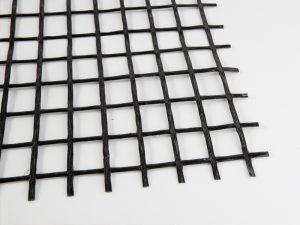
Uniaxial PET-PVC XGrid

Biaxial PET-PVC XGrid
TeMa GEOSYNTHETICS
TeMa Geo Solution has the mission of intervening on the environment using geosynthetic products and the lowest possible impact. This goal is pursued by researching and inventing new products for environmental engineering, actively involving planners and companies while assisting customers in the pre-sale phase and during and after installation.
Thanks to a modern integrated production system with branches in Italy, Spain, Turkey, Russia, Romania and the USA and a widespread sales network in more than 60 countries, TeMa offers tailor-made solutions for all projects involving structural, protection, maintenance and safety elements in the residential and civil building sectors and in the field of major environmental works. Furthermore, TeMa is not only involved in the industrial building field but also in the private building one.
This is just one of many stories we could tell you about our company, which focuses on technological innovation, ongoing research and territorial responsibility.
Successful collaboration
In all three of its divisions, TeMa has an in-company technical department that supports and assists its customers in the various phases of implementing a project. We take care of all the details, from choosing the solution to using the method of installation.
At TeMa, our technicians use in-depth analysis and cutting-edge software to propose effective, complete and reliable solutions for any type of intervention in the field of geosynthetic products. The dimensional evaluation, structural checks and specifications of the products to be used are of considerable support for the planner or the contractor. But that’s not all. The same is also true for the most experienced operators in the sector who feel the need to expand their knowledge, gaining experience in a constantly developing field. And the outcome? Being able to propose versatile solutions in step with technologies.
The companies in the IWIS Group, including TeMa, have implemented their production plants using innovative technologies, investing in a system that ensures that soil, air and water are protected. We have three photovoltaic plants, 200 kWp, 150 kWp and 100 kWp, which allow us to use energy obtained from renewable sources. The holding company also uses recycled materials for some of its production processes, relying on 4 specific plants for recycling plastics.
TeMa Geo has the support of a research laboratory, among other things, since the company firmly believes that only constant commitment to researching and developing new solutions is the key to success and constant improvement. Collaboration between the technical office and the testing and quality laboratory, especially in the geosynthetics sector, is fundamental: it gives the company’s customers state-of-the-art solutions with researched and tested products while supporting planners and contractors with the correct installation of the proposed solutions. Tests of durability, compressive strength and drainage capacity in the most critical situations are just some of the tests that TeMa laboratories carry out daily to ensure that its products meet the strict pre-established quality standards. The fact that these products are natural and/or recycled guarantees that they are not harmful to the environment, confirming TeMa’s commitment to environmental protection.

It is precisely this continuous pursuit of excellence that has allowed TeMa to obtain UNI EN ISO 9001:2000 certification, which acknowledges a quality system with the highest levels of performance. Moreover, in compliance with the CPD (Construction Product Directive) 89/106/EEC, the product ranges proposed by TeMa have followed the procedure to obtain the CE mark.
Find out more about TeMa Geo Solutions products.
- Published in CORPORATION, GEO, Research and development
TeMa at the Moscow Road Expo, Crocus Expo 10-13 October 2017
The ROAD EXPO is one of the most important road shows in Russia. TeMa, is present at the event and presents its range of products dedicated to road applications.
- Published in CORPORATION, Exhibitions and events, GEO, news
Our next Technical Seminars in June and July 2017
- June 27th 2017:
TECHNIQUES FOR IMPROVING LANDS AND CALCULATION MODELS – at the Treviso Engineers’ Convention Room
- June 28th 2017:
ENVIRONMENTAL GEOTECHNOLOGIES APPLIED TO THE STRUCTURES – 2.30 pm / 6.30 pm – at DE GUSTO DOLOMITI hall – Via Sagronia, 35, 32100 BELLUNO
- 5 July 2017:
LAND IMPROVEMENT TECHNIQUES AND CALCULATION MODELS – 2.30 pm – Hotel Fortino – Strada del Fortino 36 – TURIN
- Published in CORPORATION, GEO, news
